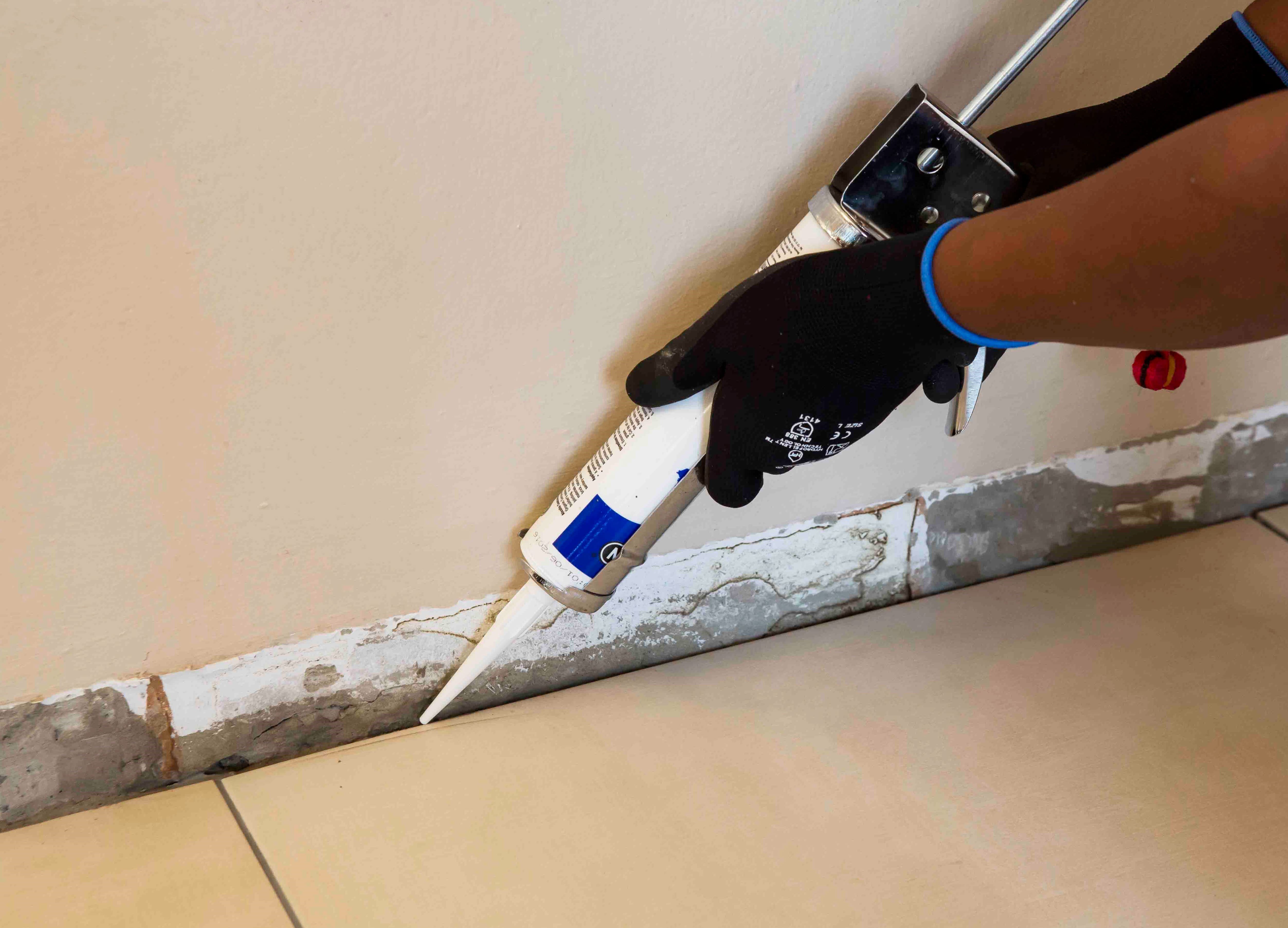How to revive your grout in 9 easy steps
Click here to download TAL’s Guide to revive your grout in 9 easy steps.
If you have started to notice cracks in your grout or if it is looking a little grubby and no amount of scrubbing helps, it may be time to replace the grout. We know what you’re thinking – easier said than done. With the right advice, product and tools, replacing grout doesn’t have to turn into your next big project – armed with these nine steps on how to revive grout – any experienced DIYer can tackle this project with ease.


Step 1: Select the grout colour
You more than likely will not find a match to your existing colour, so rather choose a new grout colour and really give the room a facelift. This blog post will help guide you in the right direction: Tips on selecting the correct grout colour.
Step 2: Gather your tools
You will need an assortment of tiling tool for this project but a grout rake is essential for scraping out the existing grout. Click here to access TAL’s full range of essential tiling tools.
Step 3: Remove existing grout
Rub the toothed blade of the grout rake back and forth, along the tile joint, until it has worn away the existing grout. Take care not to damage the tiles.
Step 4: Clean up the edges using a small chisel and hammer
Gently chip out any remaining grout from around the tile. When carrying out this step, take care not to damage/chip the adjacent tiles.
Step 5: Mix the grout
Follow the packaging instructions on the bag and if you are grouting a wet area (such as a shower or patio floor), replace the water in the grout mix with TAL Bond - a modified latex-based additive that enhances the bond strength, flexibility and water resistance of the grout.
Step 6: Apply grout
For this step, make use of a grout squeegee for easy application of the grout and be sure to fill the tile joints completely.
Step 7: Clean off excess grout
Wait for 2 – 6 hours, then use a damp (not wet) sponge with rounded corners to clean off the excess grout. The rounded corners prevent the grout from being removed from the tile joint while you clean. Remember to clean your tools before the grout hardens.
Step 8: Wait 24 hours before cleaning
After 24 hours, polish the tiles with a clean cloth to remove any grout haze and to restore their shine.
Step 9: Seal perimeter joints
If you are re-grouting a wet area, such as a shower, you would need to seal the perimeter joints of the shower using a silicon sealer.
This video, brought to you by TAL, will walk you through the step-by-step process of removing and replacing grout - specifically in a shower.
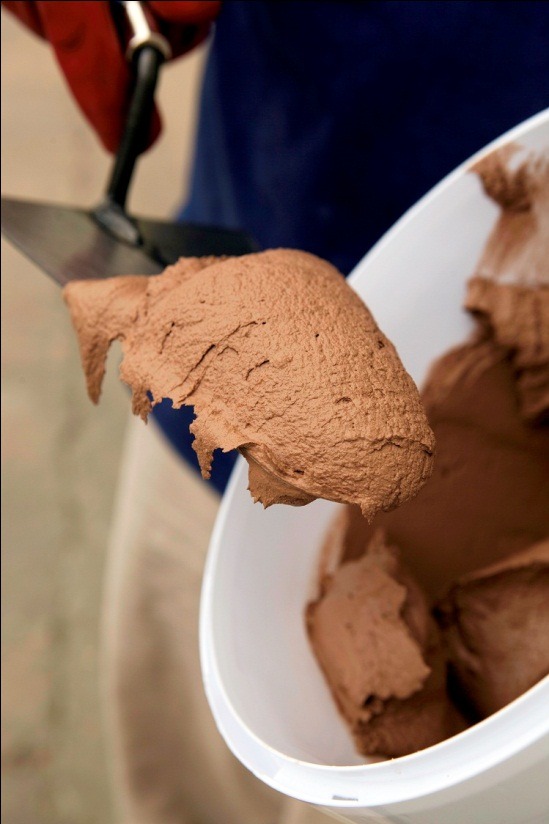

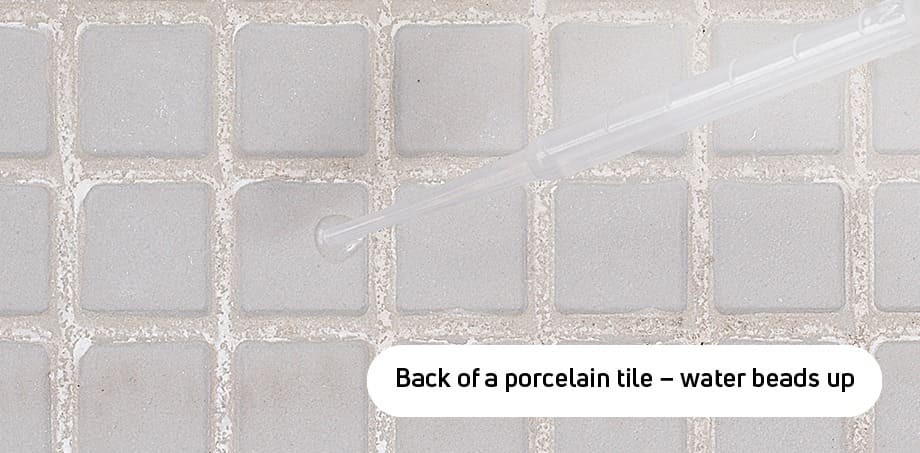

Grout installation tips
- Follow the instructions on the grout packaging for the correct mix ratio.
- Add the grout to the stipulated amount
of clean, cool water whilst mixing. Too much water in the mix can
cause colour variations in the grout
joints (patching of colour) and can also result in a soft, powdery finish. - Mix it well to form a creamy, lump-free consistency.
- If using TAL Wall & Floor Grout, add 5kg of grout to 1.5 litres of
clean, cool water. - Note that all exterior/exposed and ‘wet’ applications require the water
in the mix to be replaced with TAL Bond,
a latex additive that improves the water resistance,
flexibility and bond strength of the grout. Alternatively, TAL Bond Powder may be added to the adhesive mixing water, at a ratio of 1 x 1kg sachet per 20kg tile adhesive. - When applying the grout, ensure that the tiles are dry and free of dust.
- The joints must be raked out and
cleaned before grouting. - Apply the grout with a grout squeegee, one square metre at a time.
- Work the grout into the tile joints. Note that it is important to fill
the joints completely and to compact the grout into the joints so
that there are no voids (air pockets). - Wipe off excess grout from the face of the tiles and smooth the
surface of the grout with the squeegee.
It is important to clean off excess grout from the face of the tiles with a damp grouting sponge before it hardens completely. Rinse the sponge frequently in clean water to get rid of the grout, but remember to use a damp, not wet, sponge. If the sponge is too wet during this phase the mix will become overhydrated and become soft and crumbly when cured. Subjecting the freshly applied grout to mopping and washing before it has cured/dried properly will also cause this problem. Wait for at least 24 hours.
What can be done if the grout application failed?
The only way to rectify this problem is to scrape out the grout and to completely replace it – which can be done by using a grout rake or remover. Once the joints are clean, apply the correctly-mixed grout.
If you are refreshing your tile grout, we recommend using TAL Bond as an additive in the mix. This enhances the grout to make it more flexible, more impervious and easier to clean than standard mixed grout.
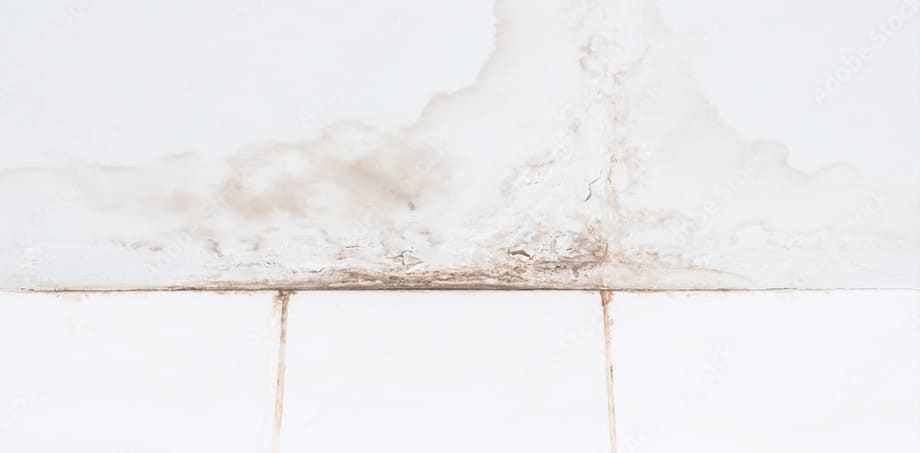

-
WHAT CAN I DO?
Attend to the water damage as soon as a problem is detected!
Water permeating through the grout and adhesive into the substrate can cause damp patches on adjacent walls or on the ceilings of rooms below the installation. There is also a risk of mould growth.
Follow these steps:1. Get a plumber in to determine if there is a leak in the pipe-work or taps:
- leakages must be repaired as soon as possible.
2. Consult a professional tiling contractor to determine if the problem is caused by:
- a lack of waterproofing
- failed waterproofing
- cracks in tile glaze
- cracked or soft grout
3. Should the wet area be tiled with porous tiles such as unglazed ceramics, or natural stones (travertine, slate, or marble), consider sealing the tiles with a suitable tile sealer.
4. Once the problems are rectified and the tiles are allowed to dry out, the dark shading will disappear.
- Porous tiles should be allowed to dry completely before being sealed.
- If you seal the tiles while they are still saturated with water, moisture could get trapped beneath the sealant, or prolong the drying-out process.
5. In extreme cases, especially if waterproofing has failed, the tiles will have to be removed and reinstalled. (See our article on How to waterproof a shower)
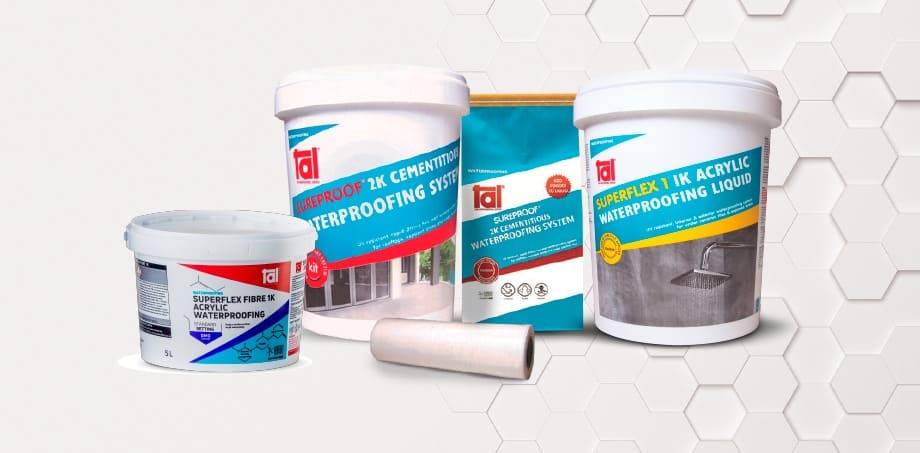

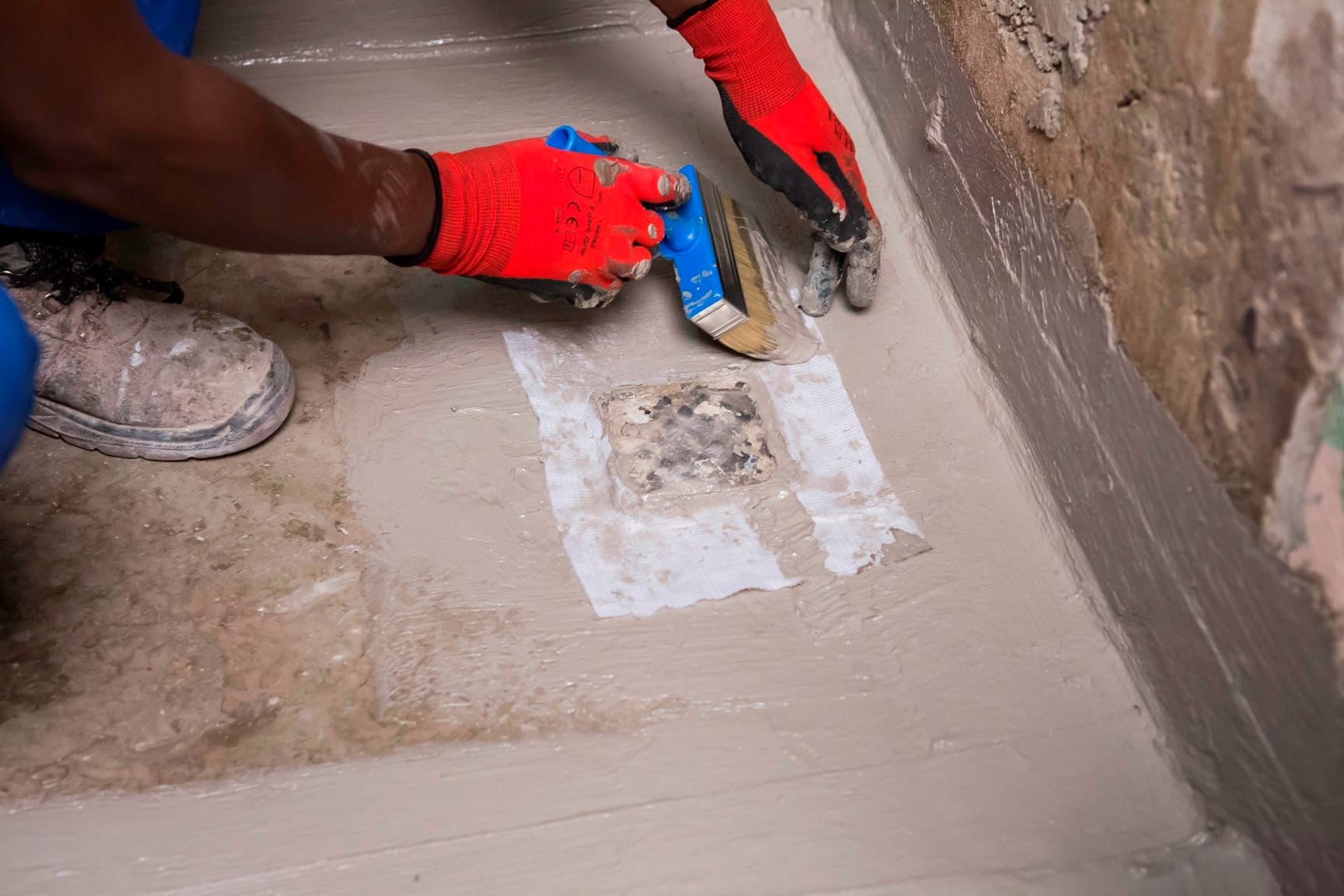

The waterproofing system needs to be applied to above the height of the shower rose and, where the wastes are flush with the floor, down into the shower waste.
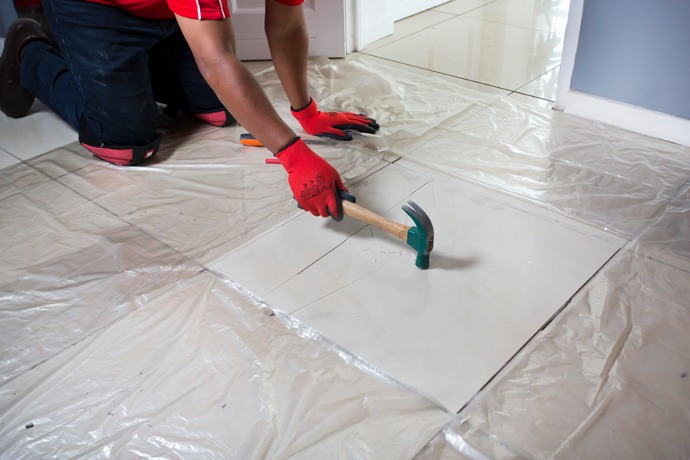



Where necessary, use a grout squeegee to apply additional adhesive to fill in any voids in the grout joints.
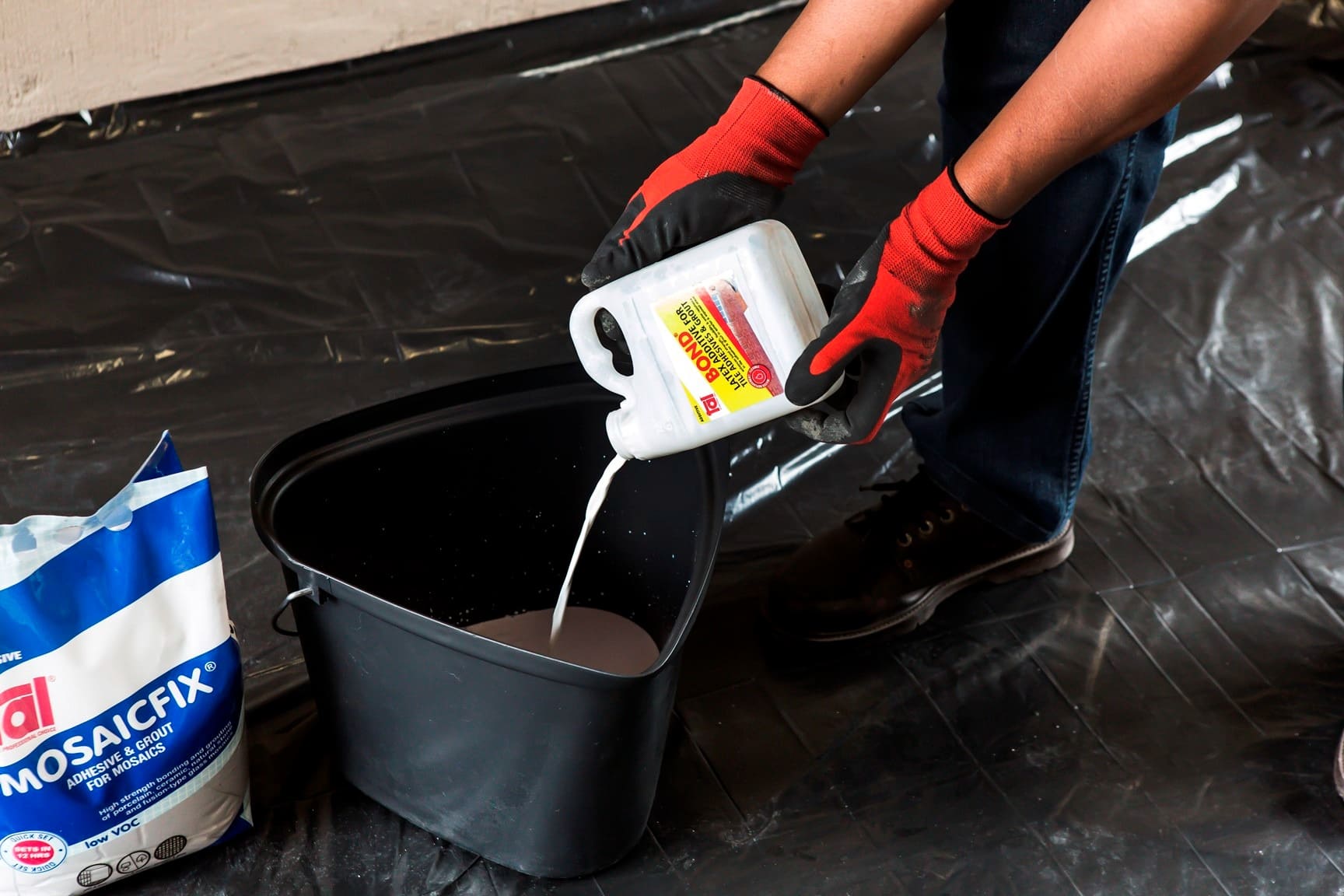

Complete the waterproofing system by replacing the water in the grout mix with TAL Bond, a latex additive, as this further increases the water resistance and flexibility of the installation.
Get the job right the first time and avoid future headaches from water seeping through and damaging the walls and floors of your home. The additional cost and effort of properly waterproofing your shower is an investment in your property and will ensure a beautiful and functional bathroom for years to come.
For more information on multi-level waterproofing systems, contact a TAL Expert on 0860 000 TAL (825), email us or watch our how-to video on YouTube for step-by-step advice on how to waterproof a shower.
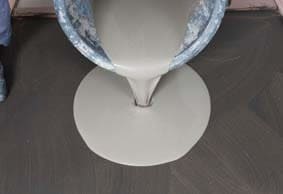

STEP 8
Roll the area using a TAL Spiked Roller to facilitate the release of any trapped air to produce a smooth surface, and to allow it to dry.
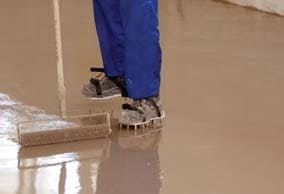

Allow the screed installation to dry for 24 hours before subjecting to foot traffic (or other trades) or installing floor coverings.


TAL MOSAICFIX is available in 20 kg and 5 kg bags from leading retail outlets.
Designed to be 100% compatible, using the TAL range of products ensures fully guaranteed multi-level tiling systems from a single source. TAL products are manufactured in South Africa to suit local climatic conditions.
If you are in any doubt, contact the TAL Technical Advisory Service on 0860 000 TAL (825), email [email protected]. Alternatively, employ the services of an experienced and skilled mosaic tiling contractor.




When replacing tiles, it is not always possible to apply the TALFIX directly to the floor, in which case apply the adhesive in a solid bed onto the back of the tile, ensuring complete coverage. Gently trace the notched side of a floor trowel through the adhesive to create ‘ridges’.


Adhesive system
When tiling onto existing tiles, it is important to only use a quick- or rapid-setting adhesive, as the existing tiles will present a dense, impervious surface, and standard-setting adhesives will take longer to dry. Too early trafficking of newly-installed tiles before the adhesive has set sufficiently can result in hollow-sounding or loose tiles.
Use TAL Tile-To-Tile quick-setting adhesive for tiling onto interior surface beds. When tiling onto suspended slabs and for external installations mix the TAL Tile-To-Tile with TAL Bond, replacing the water in the mix. Alternatively, TAL Bond Powder can be added to the adhesive mixing water.
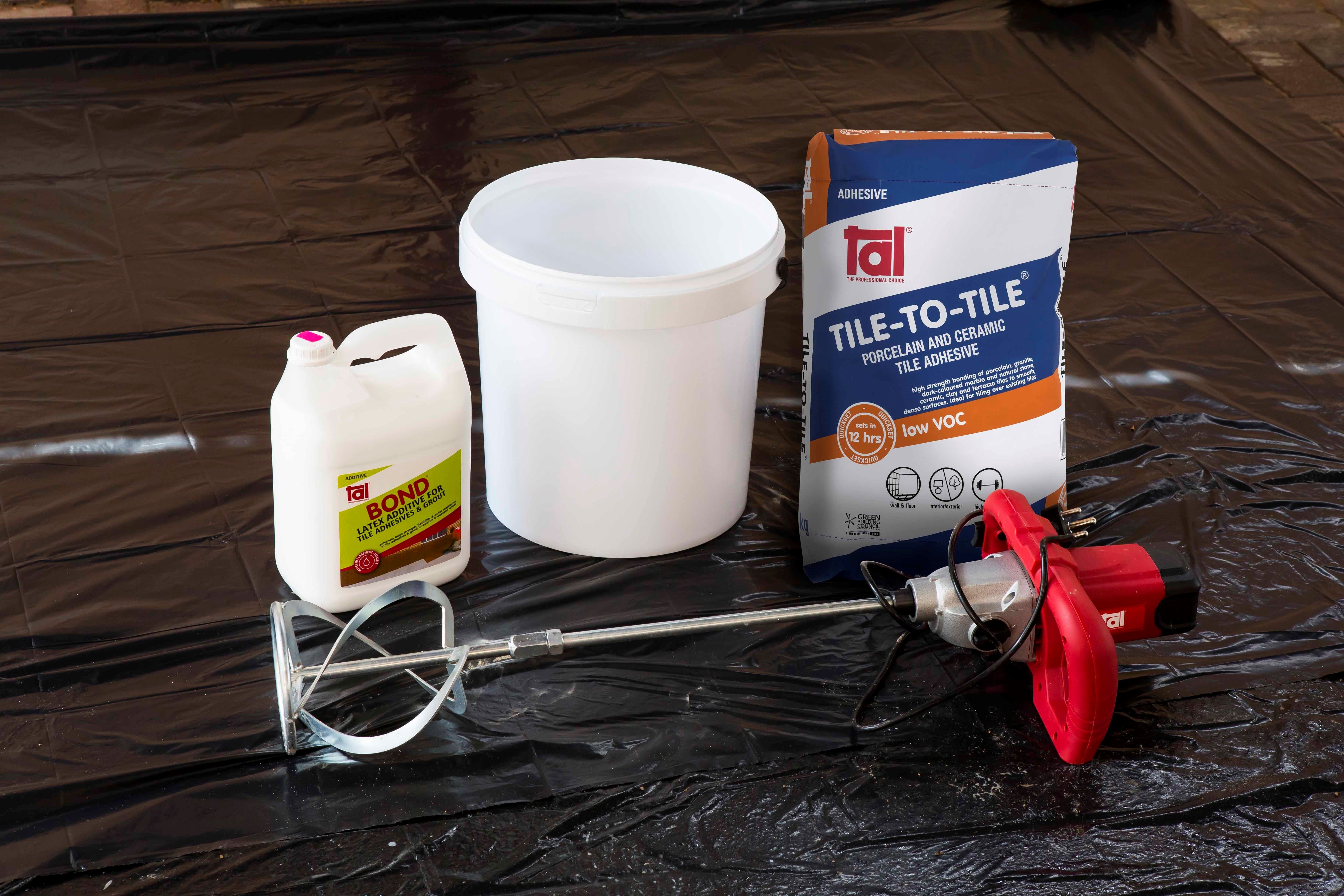

Ensure that there is a solid bed of adhesive at least 6 mm thick beneath each tile.
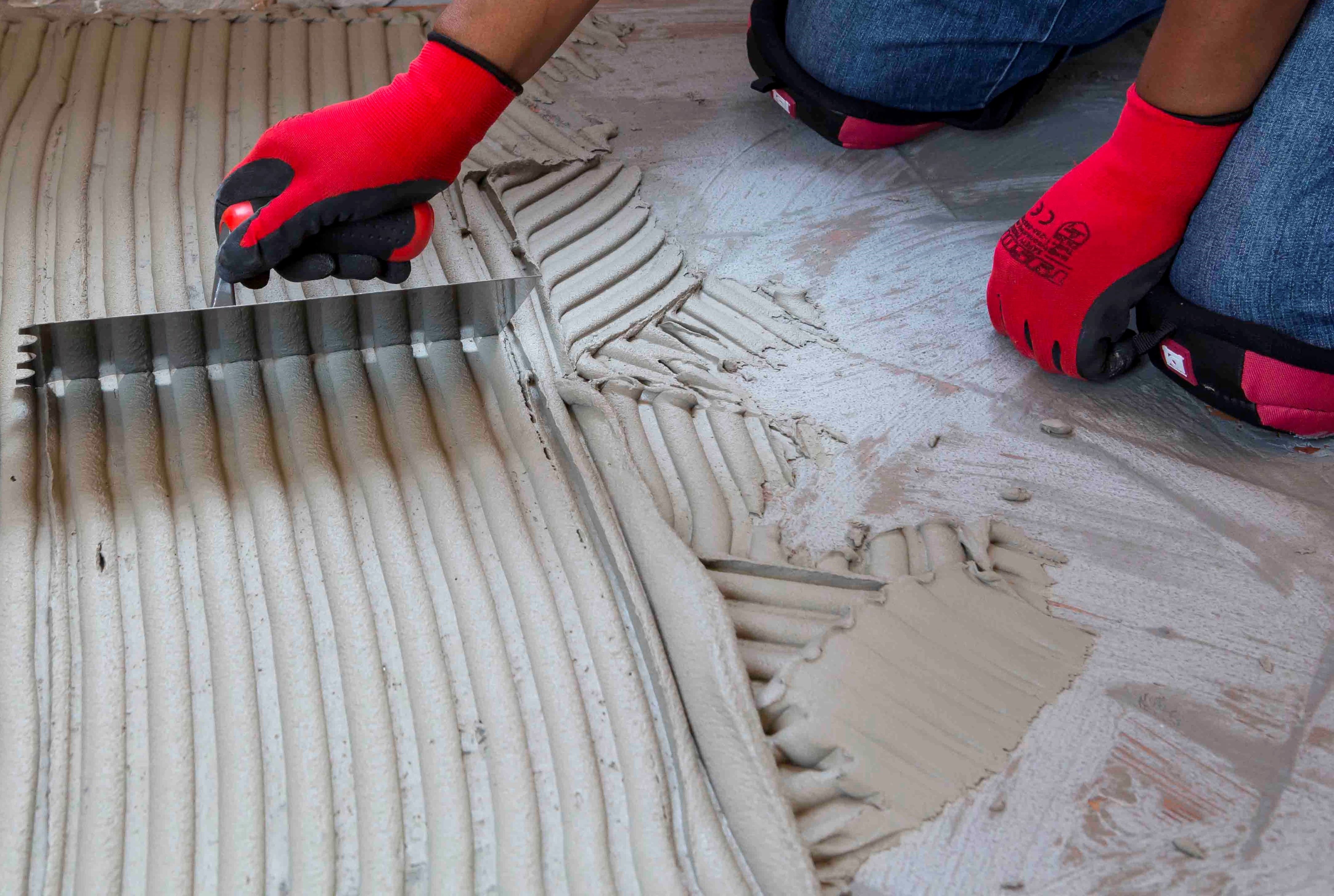

Back buttering with a thin coat of adhesive may also be required when using large-format tiles to ensure full contact with the adhesive bed.
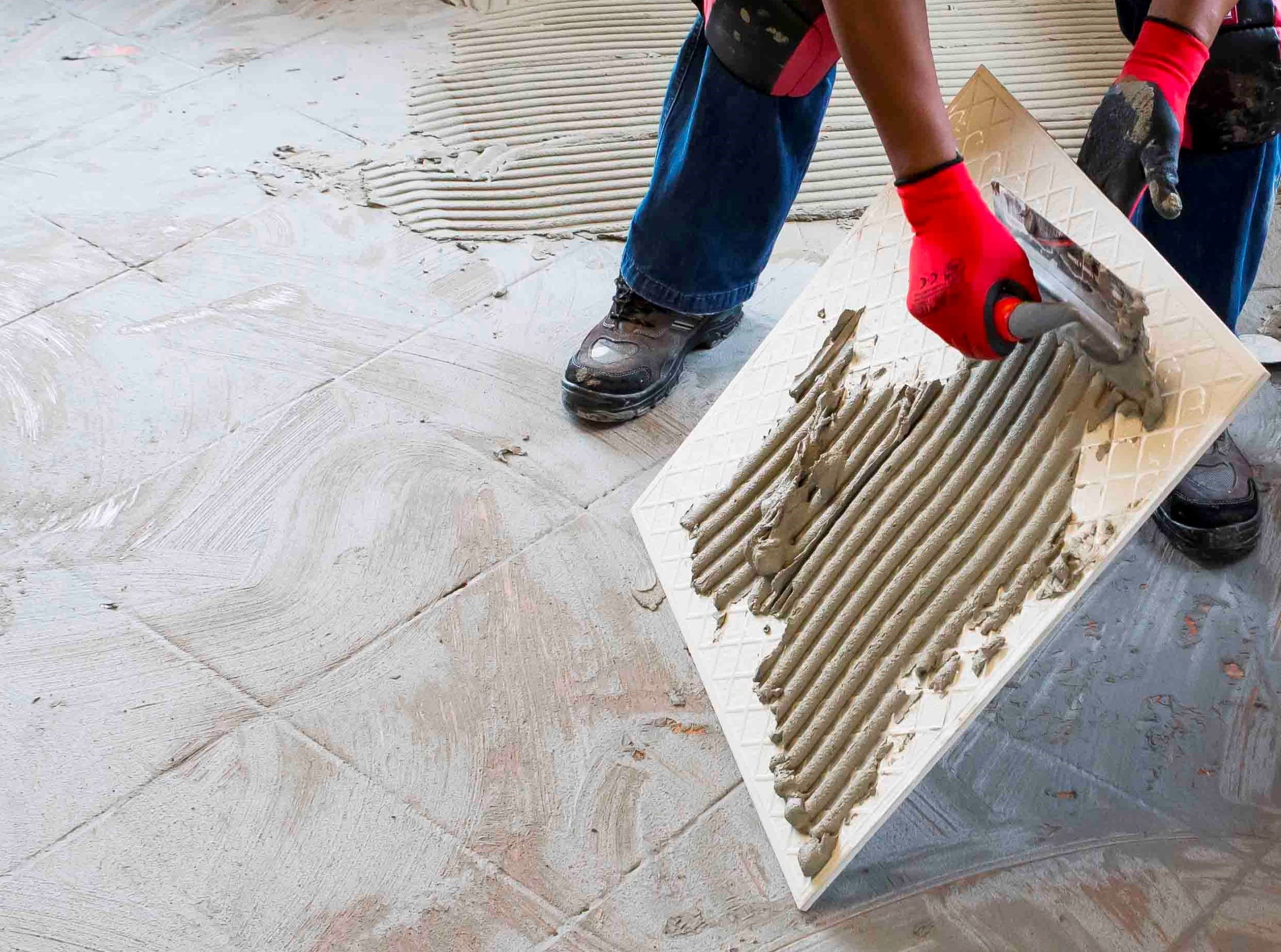

Grouting
Grouting should not be carried out until the adhesive has set sufficiently to prevent the tile installation from being disturbed during the grouting operation (always refer to the adhesive packaging for setting times). When using TAL TAL Tile-To-Tile, allow a minimum of six hours before grouting.
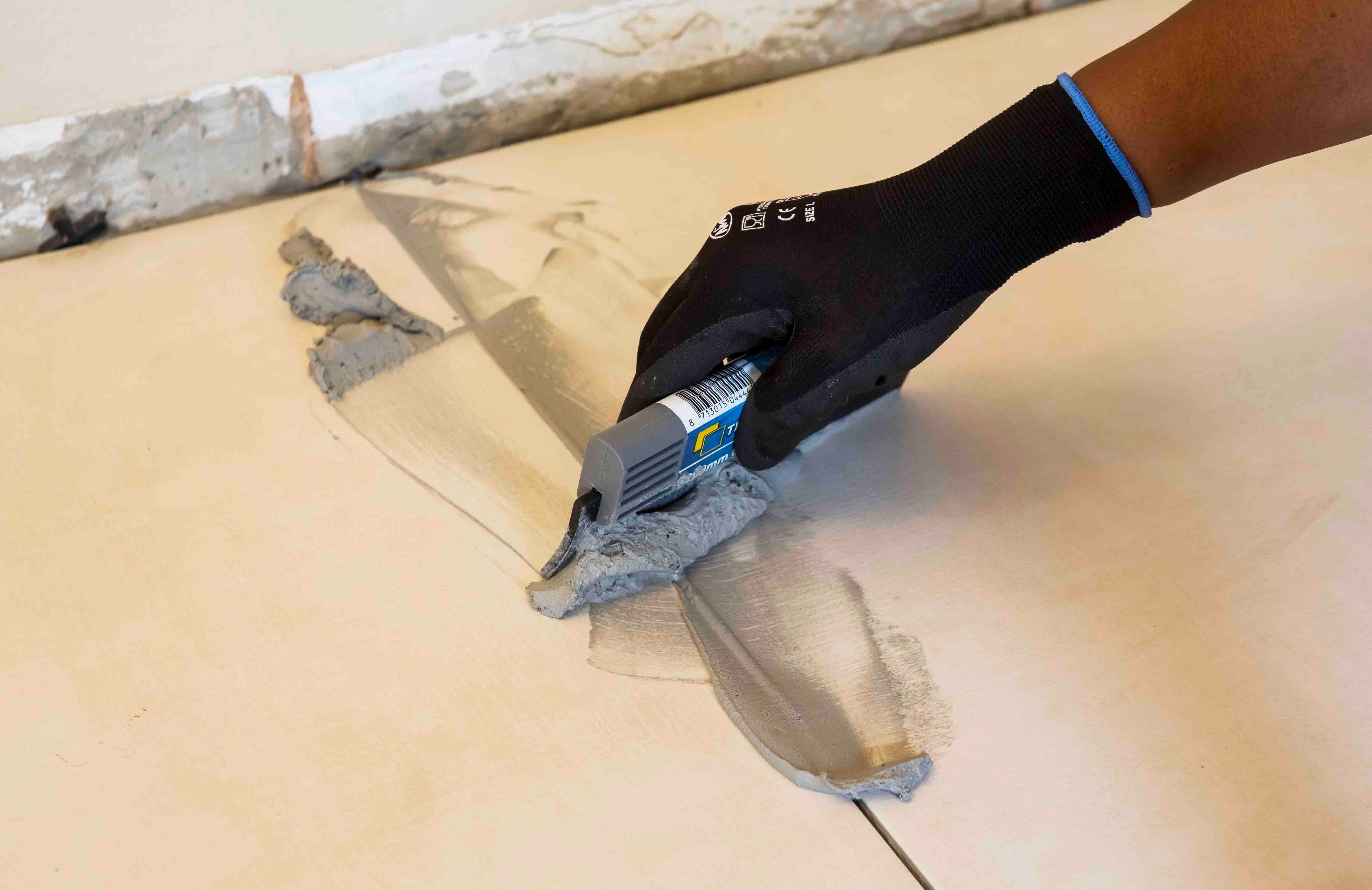

For interior surface beds, use TAL Wall & Floor Grout for filling tile joints up to 8 mm wide. TAL Quarry Grout can be used in wider joints up to 25 mm wide. On suspended slabs and for external installations, replace the water in the grout mix with TAL Bond, or add TAL Bond Powder to the grout mixing water.
Particular care must be taken to clean the grout off the tile face before it hardens completely. This is especially important when an additive such as TAL Bond or TAL Bond Powder has been used. A tile sample should be tested beforehand to ensure that no grout is absorbed through the glaze or into the tile body, thereby staining the tiles permanently.
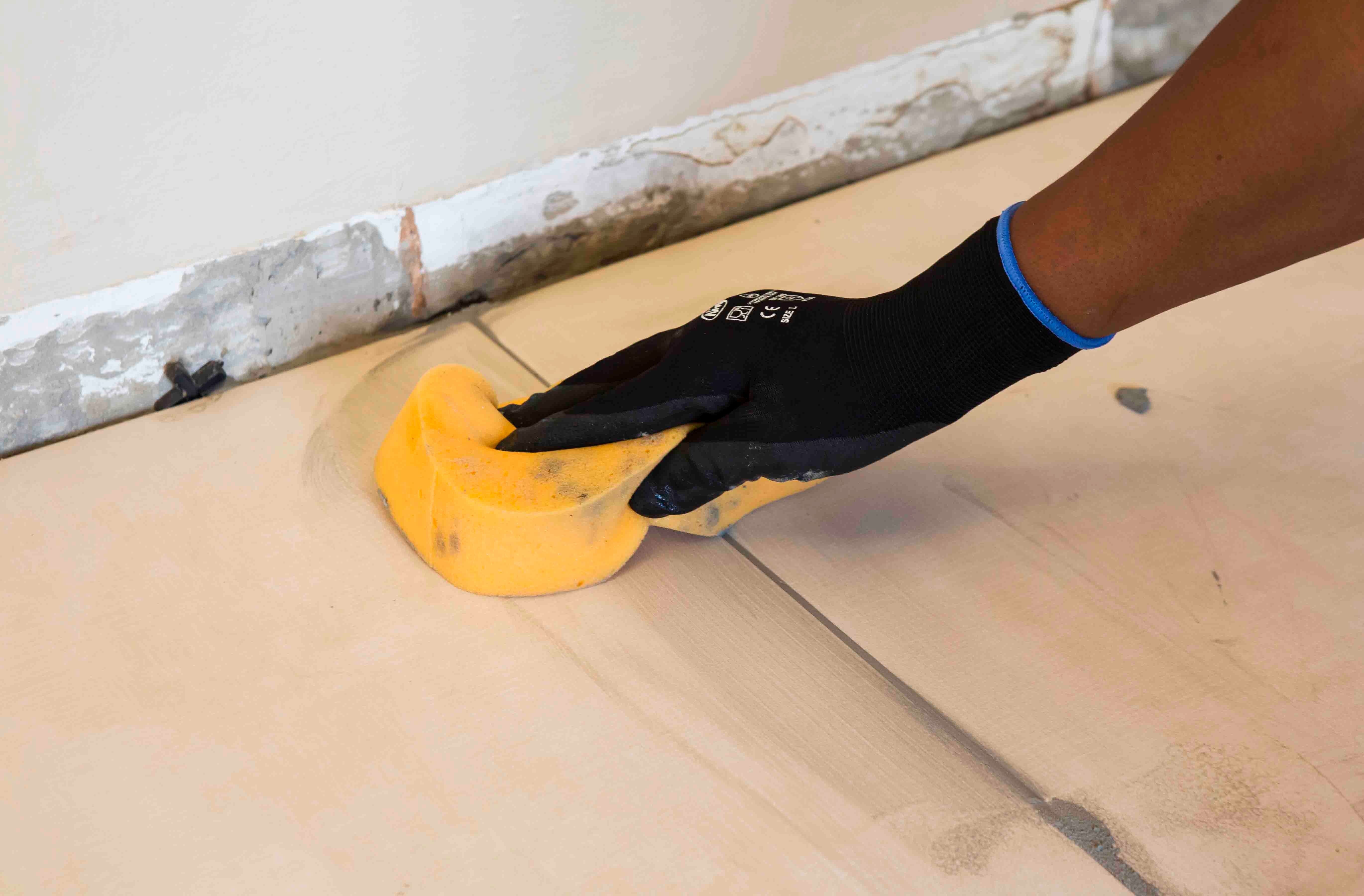

Movement joints
The lack of movement joints in tile installations is a major cause of tile failure. When tiling over existing tiles, the existing structural and movement joints must be maintained in the new tile installation. The movement joints should be at least 5 mm wide and extend through the adhesive and both tile layers.
